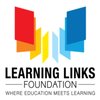Resource Person
10+ Resource Person Interview Questions and Answers

Asked in Azim Premji Foundation

Q. As a teacher, how would you teach primary level mathematics to a class of 35 eighth-grade children with varying skill levels in a 40-minute period, focusing on multi-level teaching?
Teaching primary level math to class 8 with 35 children in 40 mins
Divide the class into smaller groups based on their level of understanding
Assign different tasks to each group, such as solving problems or playing math games
Rotate between the groups to provide individual attention and guidance
Use visual aids and interactive activities to keep the children engaged
End the class with a quick recap and quiz to assess their learning
Example: Group 1 can solve basic addition problem...read more

Asked in Learning Links Foundation

Q. 3. What is the literacy of India in overall? 4. Which state is highest in Literacy? Which district is at top in literacy in my state?
India's literacy rate is 74.04%. Kerala has the highest literacy rate among states and Serchhip district in Mizoram has the highest literacy rate among districts.
India's literacy rate is 74.04%
Kerala has the highest literacy rate among states
Serchhip district in Mizoram has the highest literacy rate among districts

Asked in Azim Premji Foundation

Q. How do you teach students to write a speech?
Teaching students to write a speech involves understanding the structure, providing guidance on content, and practicing delivery.
Explain the structure of a speech, including introduction, body, and conclusion.
Provide examples of effective speeches to analyze and discuss.
Guide students in selecting a topic and organizing their ideas.
Teach techniques for engaging the audience, such as using rhetorical devices or storytelling.
Encourage students to practice their speech multiple ...read more
Asked in Prawarda

Q. As a Project Coordinator, how would you implement CSR funds in a rural area?
Implementing CSR funds in rural areas involves strategic planning, community engagement, and sustainable project execution.
Conduct a needs assessment to identify key areas for intervention, such as education, health, or infrastructure.
Engage with local communities to understand their priorities and involve them in the planning process.
Develop partnerships with local NGOs and government bodies to leverage resources and expertise.
Implement projects like building schools, provid...read more
Asked in Prawarda

Q. How can you effectively introduce new activities or concepts to people in rural areas?
Engaging rural communities requires culturally relevant activities and concepts that resonate with their values and needs.
Conduct community workshops to introduce new concepts, like sustainable farming techniques.
Use storytelling to share success stories of local individuals who adopted new practices.
Involve local leaders to endorse and promote new ideas, enhancing credibility.
Utilize visual aids and demonstrations to make concepts more relatable and understandable.
Create par...read more

Asked in Sri Aurobindo Society

Q. What are the levels of Bloom's Taxonomy?
Bloom's Taxonomy is a framework for categorizing educational goals into levels of complexity and specificity.
The levels are: Remembering, Understanding, Applying, Analyzing, Evaluating, and Creating.
Each level builds upon the previous one, with higher levels requiring more complex cognitive skills.
Examples of activities at each level include: recalling facts (Remembering), explaining concepts (Understanding), solving problems (Applying), breaking down complex ideas (Analyzing...read more
Resource Person Jobs




Asked in Ministry of Rural Development India

Q. How can you work digitally in remote areas?
Digital work in remote areas can be done through various means such as satellite internet, mobile hotspots, and offline tools.
Use satellite internet for reliable connectivity
Create mobile hotspots using cellular data
Use offline tools such as offline maps and document editors
Utilize low-bandwidth communication tools like email and messaging apps
Consider solar-powered devices for charging and power backup
Asked in Prawarda

Q. How can we develop our remote areas?
Developing remote areas requires a multi-faceted approach focusing on infrastructure, education, healthcare, and economic opportunities.
Improve transportation infrastructure, such as building roads and bridges to connect remote areas to urban centers.
Enhance access to education by establishing schools and providing online learning resources.
Invest in healthcare facilities and mobile clinics to ensure medical services reach remote populations.
Promote sustainable agriculture an...read more
Share interview questions and help millions of jobseekers 🌟

Asked in Prawarda

Q. What is the difference between Rural Development and Social Services?
Rural Development focuses on improving rural areas' economic and social conditions, while Social Services address broader community needs.
Rural Development aims at enhancing agriculture, infrastructure, and livelihoods in rural areas. Example: Building roads in villages.
Social Services encompass a wide range of support systems, including healthcare, education, and welfare. Example: Providing free healthcare clinics.
Rural Development often involves community participation and ...read more
Asked in Prawarda

Q. What do you know about Rural Development?
Rural development focuses on improving the quality of life and economic well-being in rural areas through various initiatives.
Infrastructure development: Building roads, schools, and hospitals to enhance accessibility.
Agricultural support: Providing training and resources to farmers for better crop yields, such as introducing high-yield seed varieties.
Microfinance initiatives: Offering small loans to entrepreneurs in rural areas to stimulate local businesses and create jobs.
H...read more

Q. Can you teach presentation skills?
Yes, I can teach presentation skills through interactive workshops and personalized coaching sessions.
Covering topics such as structuring a presentation, engaging the audience, and effective use of visual aids
Providing feedback and guidance on body language, vocal delivery, and overall presentation style
Utilizing real-life examples and practice sessions to enhance learning and skill development
Asked in Daffodils Public School

Q. What is osmosis?
Osmosis is the movement of water molecules from a region of high concentration to a region of low concentration through a semi-permeable membrane.
Osmosis is a type of passive transport.
It occurs in living cells and is important for maintaining cell shape and function.
Examples of osmosis include the movement of water from the roots of a plant to its leaves and the movement of water from the bloodstream into cells.
Osmosis can also be used in water purification processes.
The dir...read more

Asked in Sri Aurobindo Society

Q. What is rancidity?
Rancidity is the process of spoilage of fats and oils resulting in unpleasant odor and taste.
Rancidity occurs due to oxidation or hydrolysis of fats and oils.
It can be prevented by storing in airtight containers, adding antioxidants, and refrigeration.
Examples of rancid foods include stale nuts, spoiled butter, and old cooking oils.

Asked in Sri Aurobindo Society

Q. Describe the process of digestion in humans.
Digestion in humans is the process of breaking down food into smaller components that can be absorbed by the body.
Digestion starts in the mouth with the mechanical and chemical breakdown of food by enzymes in saliva.
Food then travels down the esophagus and into the stomach where it is further broken down by stomach acid and enzymes.
The small intestine is where most of the nutrients are absorbed into the bloodstream.
The large intestine absorbs water and electrolytes, and elimi...read more
Interview Questions of Similar Designations
Interview Experiences of Popular Companies








Reviews
Interviews
Salaries
Users

















